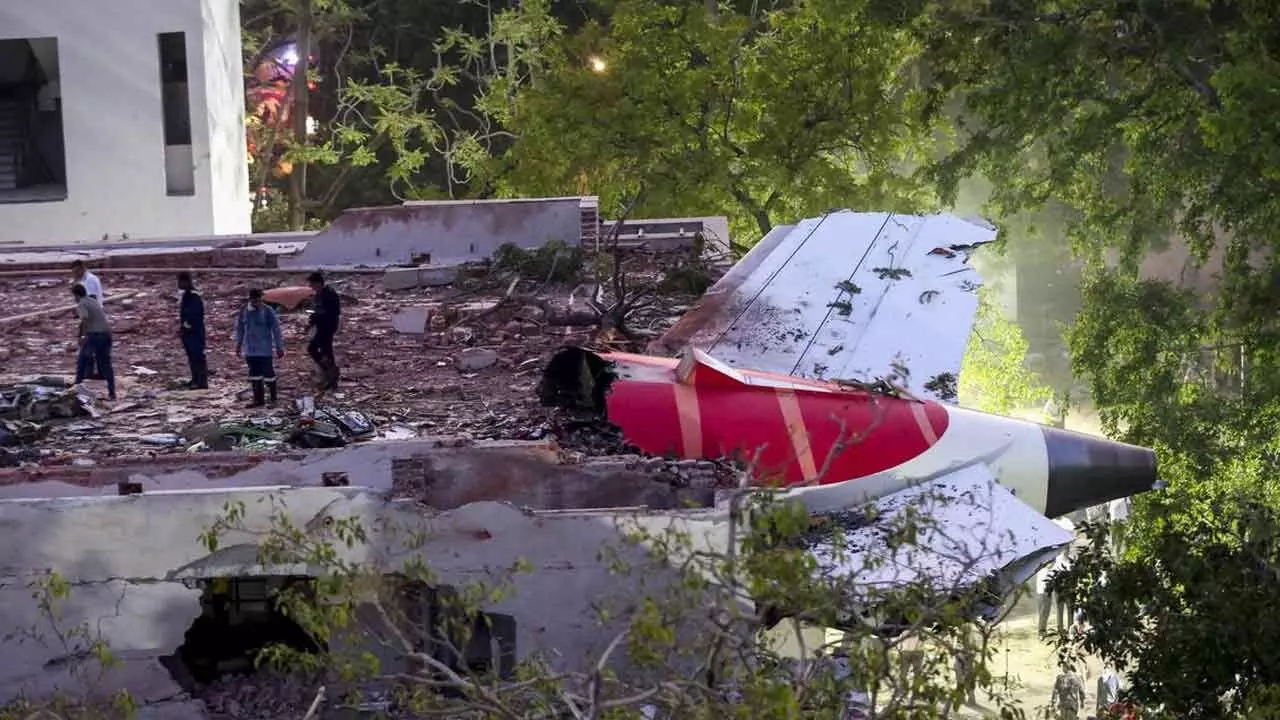Air India Grapples with Aircraft Shortages Amidst Post-Crash Checks and Airspace Curbs
Air India cancels multiple international flights, including its Ahmedabad-London route, due to aircraft unavailability, mandatory safety checks following the recent Dreamliner crash, and extended flight times caused by West Asian airspace restrictions.
Air India Grapples with Aircraft Shortages Amidst Post-Crash Checks and Airspace Curbs

Ahmedabad, India – Air India's operational woes continue to mount in the wake of last week's tragic Dreamliner crash in Ahmedabad. On Tuesday, the airline was forced to cancel its renumbered Ahmedabad-London Gatwick flight (AI 159), just days after it had resumed service following the fatal incident. The reason, clarified by the airline, was "aircraft unavailability," a direct consequence of ongoing airspace restrictions over West Asia and heightened, mandatory safety checks on its fleet.
The cancellation of AI 159, which was previously flight AI 171 before the June 12th disaster, highlights the complex challenges Air India is currently navigating. While initial speculation pointed to a technical snag, Air India firmly denied this, attributing the disruption to the ripple effects of the crash and regional geopolitical tensions. The Boeing 787-8, which was supposed to operate the cancelled flight, only arrived back in Ahmedabad from Gatwick hours behind schedule, further exacerbating the logistical challenges.
"There was no technical snag, as claimed," Air India stated, emphasizing that "airspace curbs and additional checks were leading to longer than usual turnaround of aircraft." The airline expressed regret for the inconvenience caused, assuring affected passengers of alternate arrangements including hotel stays, full refunds, or complimentary rescheduling based on their preference.
This cancellation was, however, just one of many for Air India on Tuesday. The carrier announced the grounding of nine international flights in total, with eight of them involving the Boeing 787-8 Dreamliner aircraft. These widespread disruptions stem from a confluence of factors: the Directorate General of Civil Aviation (DGCA) mandated additional safety checks on the Dreamliner fleet, increased turnaround times due to airspace closures, and a general strain on the airline's maintenance and operational capabilities.
Besides the Ahmedabad-London Gatwick flight, other cancelled Dreamliner services included Gatwick-Amritsar, Delhi-Vienna, Delhi-Paris, Paris-Delhi, Delhi-Dubai, Bengaluru-London, and London-Bengaluru. Compounding the difficulties, a ninth flight – a Boeing 777 operating between San Francisco and Mumbai with a Kolkata layover – was grounded in the Bengal capital due to a snag, leading to the subsequent cancellation of its return leg to San Francisco. Interestingly, the scheduled Vienna-Delhi flight managed to avoid cancellation, reportedly because a Boeing 787-8 was already positioned there.
Air India's fleet comprises 33 Dreamliners, with four currently undergoing long-term maintenance. Of the remaining 29, at least 24 have already undergone the one-time safety inspections ordered by India's aviation regulator.
The ongoing Israel-Iran conflict has significantly worsened Air India's operational predicament. Longer routes to and from Western destinations have become necessary due to the closure of Iranian and even Jordanian airspace. These diversions have added approximately an hour to flight durations on some routes, directly impacting both fuel consumption and crew duty times. Sources indicate that Air India has even petitioned the DGCA to relax stipulated duty intervals for pilots and cabin crew, which are designed to prevent fatigue, in light of these extended flight times.
Industry observers suggest that Air India's recent expansion of routes, coupled with slower-than-expected aircraft induction due to global supply chain issues, has stretched the carrier's resources thin. "There's hardly any buffer if an aircraft has to be grounded for technical reasons," a source highlighted, pointing to the lack of spare capacity in the airline's current operations. The recent tragic crash of AI-171 on June 12, India's worst civil aviation disaster involving a single aircraft, has undeniably intensified the scrutiny and operational challenges facing the airline.

